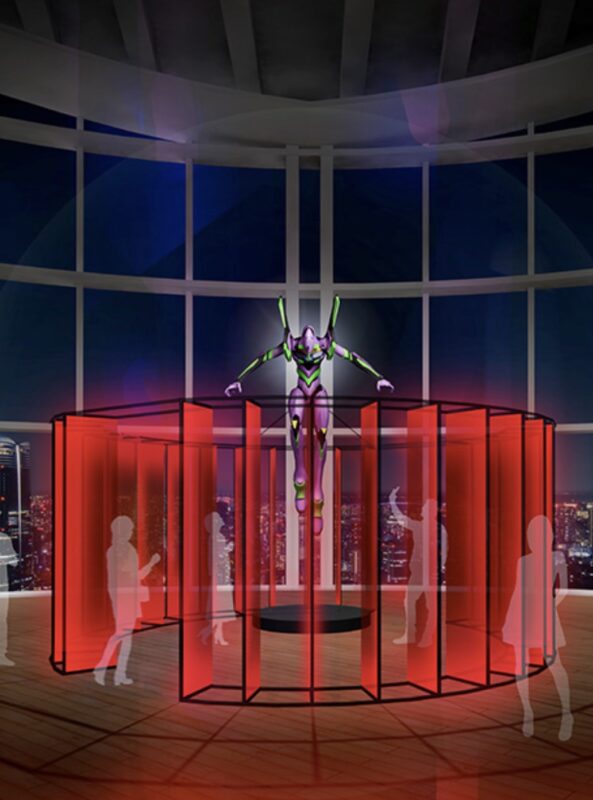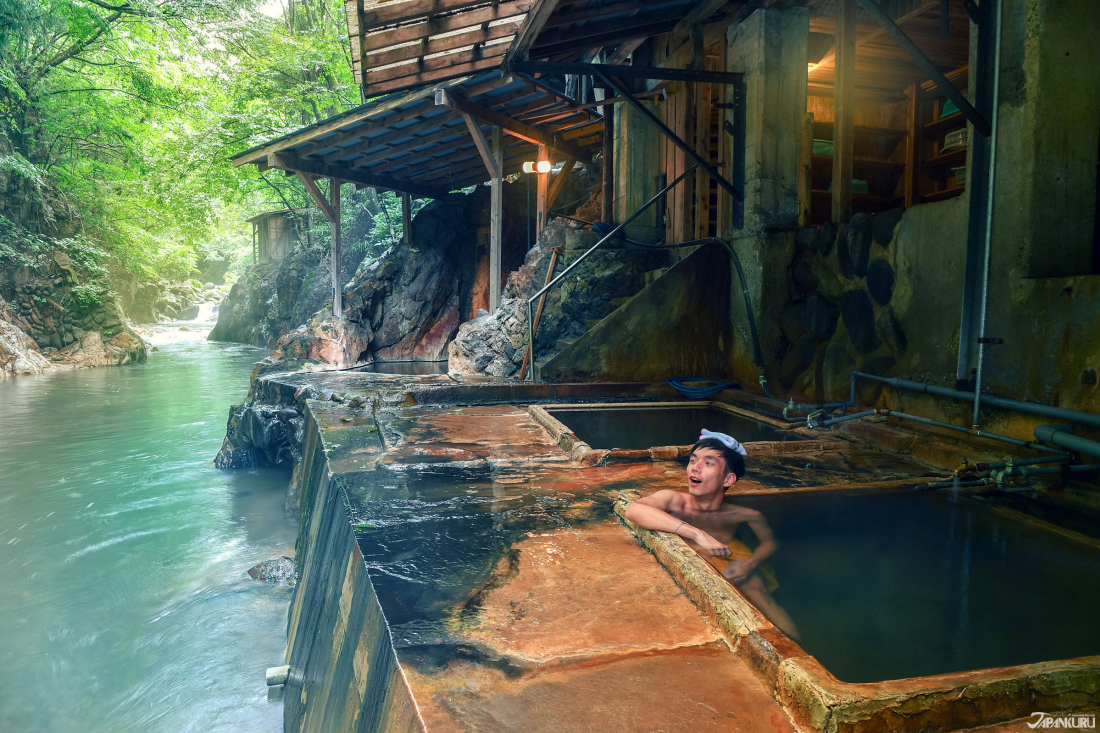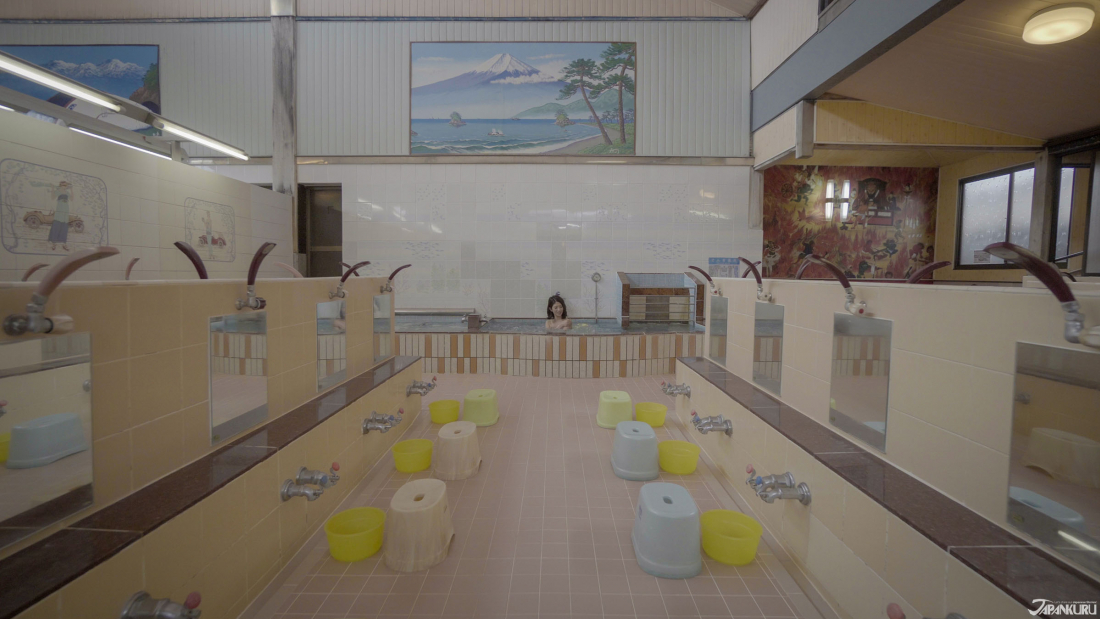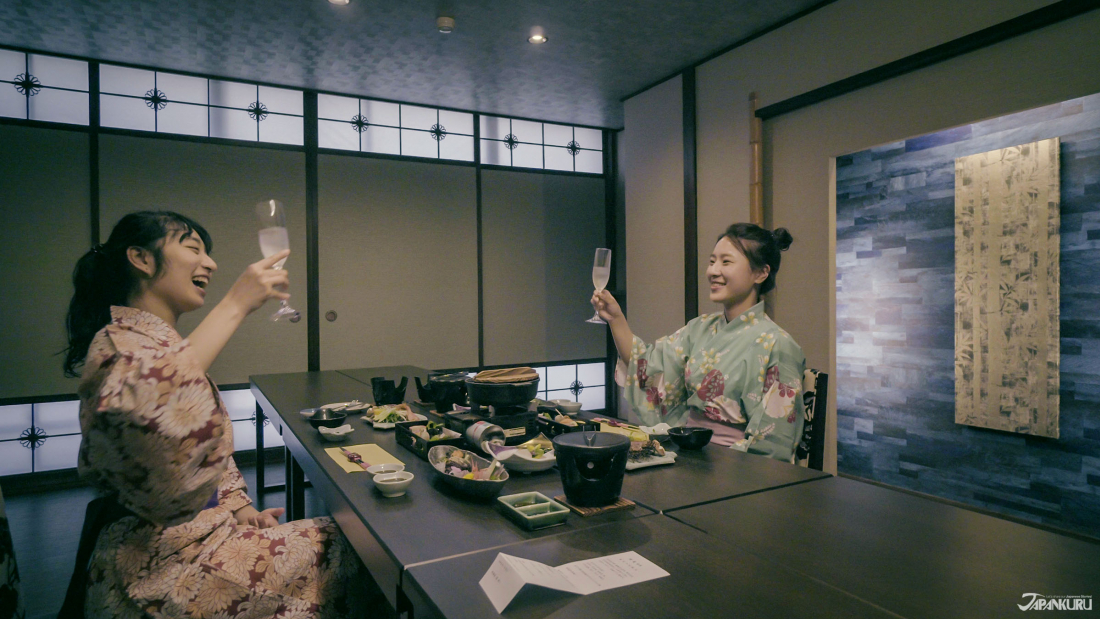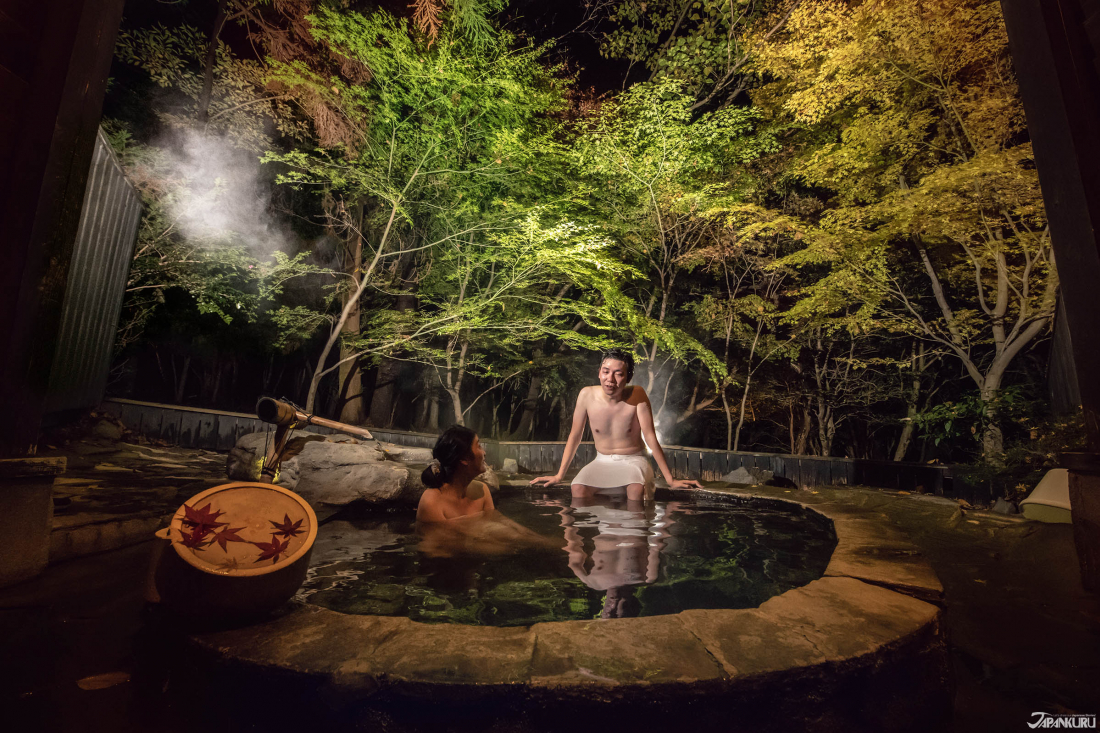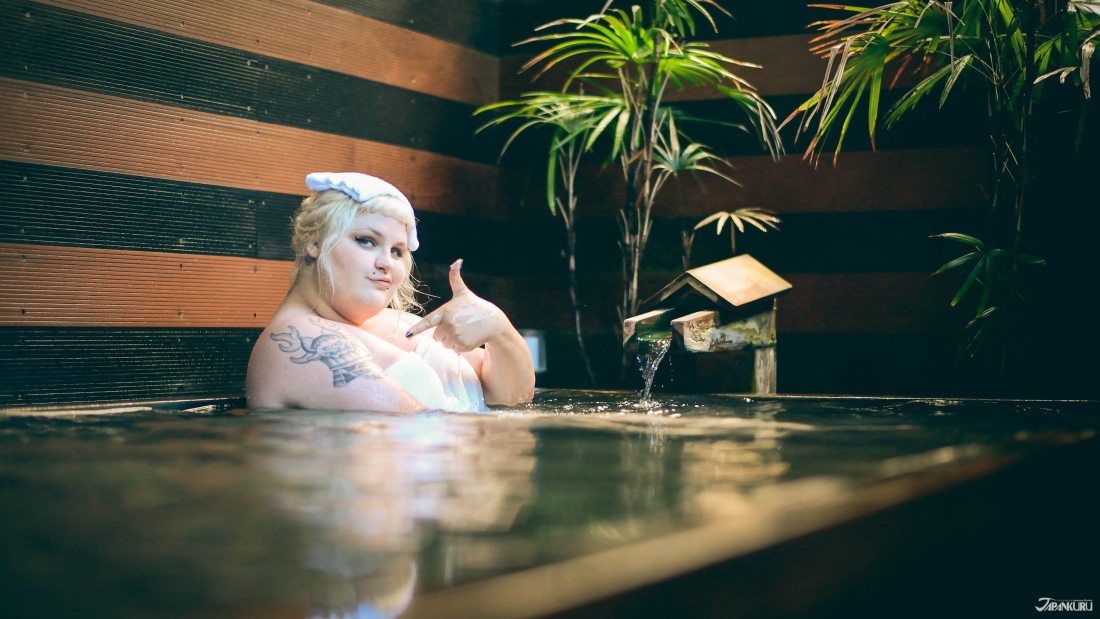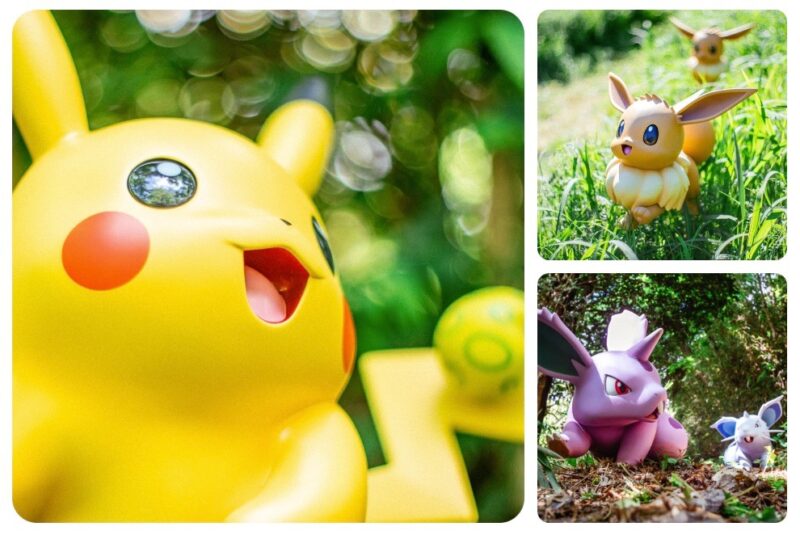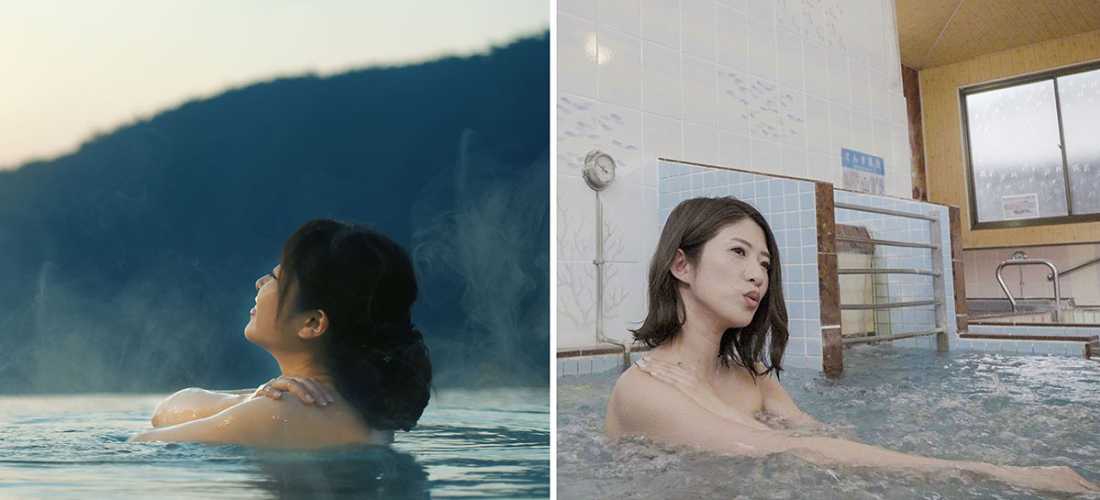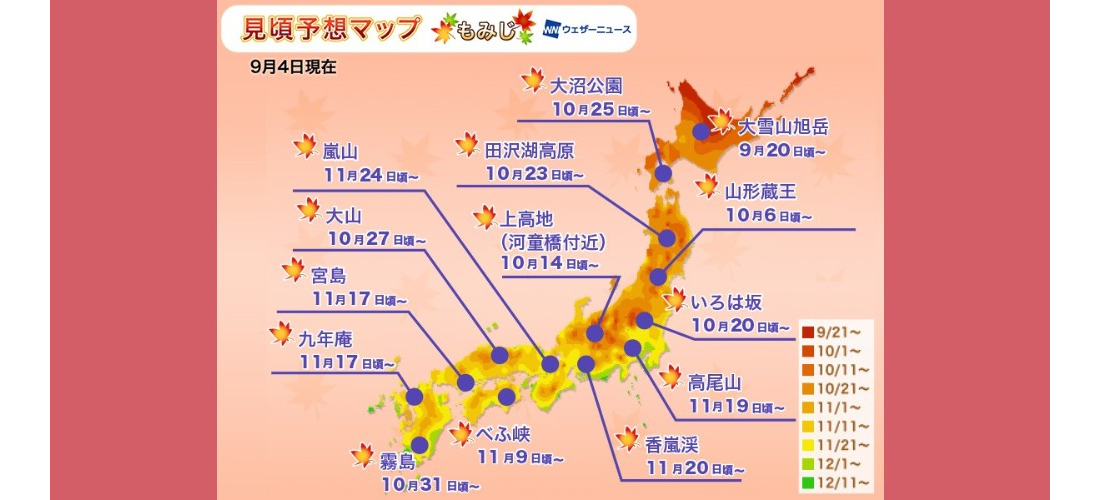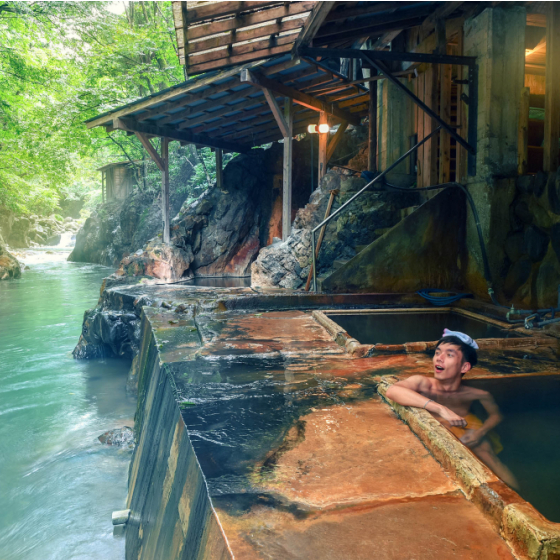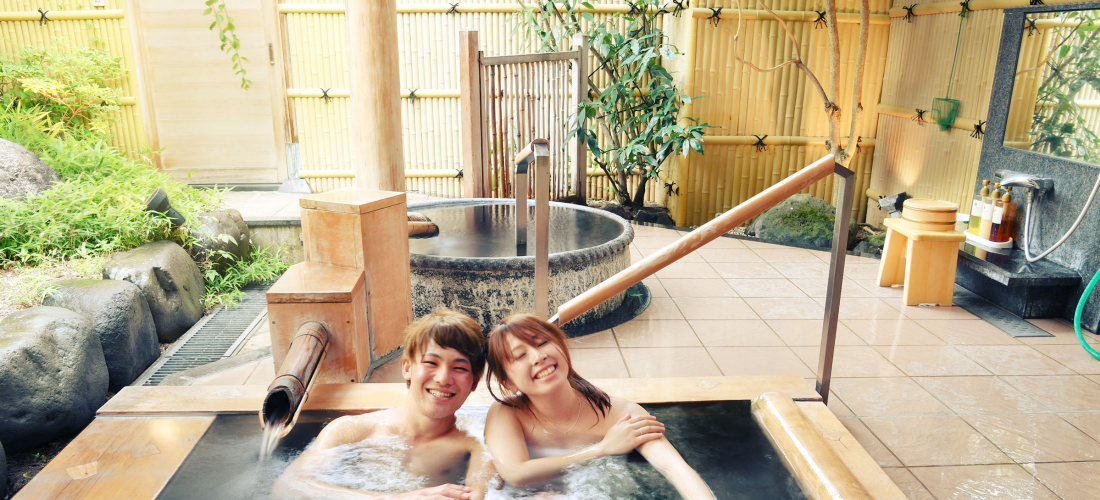
CONTENTS
Onsen, sento, rotenburo, do you know what these words mean? Read on to find out everything you need to enjoy Japan’s unique hot spring culture.
Hot Springs and Spa Culture in Japan
The Japanese islands are a hotspot of seismic and geothermal activity (pun intended), which is why the islands are not only scattered with volcanos, but also many, many natural hot springs. The people of Japan have been using naturally warm springs (called onsen, 温泉) to bathe and relax in for centuries upon centuries, and some popular onsen baths in Japan have now been in use for over a millennium! Japanese hot spring culture has had plenty of time to develop and grow, and now there are a variety of ways to enjoy a relaxing, steaming-hot bath in the land of the rising sun.
The Standard Onsen (温泉)
The word onsen refers to natural hot springs in Japan, and it's the most basic term. The definition is simple, an onsen either:
(1) flows out of the ground in its natural state at a temperature above 25°C (77°F)
or
(2) contains a certain amount of particular minerals.
The Japan Spa Association Hot Spring of Japan has a more detailed definition of what temperatures and minerals officially make a hot spring an "onsen" here, dividing the true onsen from plain old baths. Of course, plenty of people in Japan visit public baths in Japan, regardless of whether they fit the strict definition of onsen or not.
The top three onsen in Japan are commonly thought to be Arima Onsen in Hyogo, Kusatsu Onsen in Gunma, and the Gero Onsen in Gifu, but there are popular onsen all over the country. You'd be hard-pressed to find an area without one! And many people consider a visit to an onsen to be an integral part of visiting japan.
Go Outdoors! The Rotenburo (露天風呂)
"Rotenburo" simply means any bath located outside in the open air, which means it could refer to either a natural hot spring onsen, or a normal bath. Taking a bath outside might seem a little intimidating to the uninitiated, but onsen-lovers often fall in love with the rotenburo experience. Rotenburo allow bathers to surround themselves with nature and really feel Japan's four seasons while they relax in the water. They're often open throughout the fall and winter, so you can watch red maple leaves drift down from the treetops or even feel the snow melt on your skin, while you keep warm in the piping hot bath. Talk about a unique experience!
Ryokan throughout Japan offer rotenburo like this one in the Unazuki area of Toyama, and rotenburo fans will choose their destinations based on water quality or natural scenery. Many Japanese onsen rankings place Kinugawa Onsen in the top three, along with Ito Onsen and Atami Onsen.
Public Baths: The Sento (銭湯)
Sento, or public bathhouses, are often easier to access than onsen, with locations scattered throughout Japan's biggest cities and smallest villages. (Just look at this sento map of the Kyoto Station area!) That's because, as we all know by now, the term onsen is strictly regulated and only used for natural hot springs, but sento baths can just use normal water. Even without natural minerals or rumors of special healing effects, bathing in a huge public bath is still a part of Japanese culture, and sento are often busy with locals, dropping in for a bath at their neighborhood sento.
Sento can be fairly basic bathhouses, but if you run into a "Super Sento," you'll probably find more than you bargained for! Check out the listings on SuperSento.com and you'll find sento like this one in Chichibu, Saitama, where the baths share the building with shops, restaurants, and "relaxation rooms" full of massage chairs.
Stay the Night: The Ryokan (旅館)
Ryokan are traditional Japanese hotels, ranging from smaller inns to larger establishments, and the emphasis is generally on Japanese-style rooms with tatami mats, luxurious multi-course meals, and communal baths―usually a natural hot spring. The benefit of going to a ryokan onsen is that you get to relax and enjoy your own private room after you finish your bath, enjoy local delicacies, and drift off to sleep without having to drag yourself home first.
All to Yourself: The Kashikiri (貸切)
Not interested in going to a communal bath and sharing the water with others? Prefer a solitary bath, or perhaps a soak with a loved one? Don't worry, there's an option for you too! Kashikiri means private rental, and many onsen facilities (especially ryokan) offer kashikiri onsen that can be rented for private use. Some accommodations even have kashikiri baths built right into the balcony of nicer guest rooms!
♨ Onsen Etiquette ♨
Ready to jump right in and make a splash? Visiting an onsen can be fun, but it's not really the place to go crazy. Communal baths work because everyone does their best to enjoy the experience without inconveniencing others―very Japanese indeed. Most of the "onsen rules" you'll see are common sense, and they're mostly there to keep you and other bathers safe and happy, so keep an eye out and follow any rules you see posted! For some basic safety guidelines before you go, check out these from the Japan Spa Association Hot Spring of Japan.
Tattoo-Friendly Onsen
Unfortunately, many public baths in Japan still don't allow people with tattoos to enter the water―or in some cases, to enter the premises! For many years, tattoos in Japan were associated with the Yakuza, and so barring tattooed patrons is still thought of as a safety practice at some onsen and sento. But as the years go by, more and more establishments allow tattoos, and quite a few places are willing to make exceptions for foreign travelers with small designs. If you've got ink, check out our list of tattoo-friendly hot springs for some ideas of where to go!
Enjoy Your Bath!
Hot springs in Japan are deeply connected to the local culture, and travelers are just beginning to catch on. But the world of onsen is wide, with lots to offer―true onsen lovers can acquire the qualifications to become an "onsen instructor", "onsen sommelier", or "onsen coordinator." There are even onsen out there still waiting to be found, tucked into riverbanks and sand dunes or up in the mountains―will you be the one to find them?
(Just be careful, though, those hot springs in the wild can be burning hot!)
For more updates and info from Japan, follow Japankuru on twitter, instagram, and facebook!
Details
NAME:Hot Springs of Japan
MAP
COMMENT
FEATURED MEDIA
VIEW MORE 
A New Tokyo Animal Destination: Relax & Learn About the World’s Animals in Japan
#pr #japankuru #anitouch #anitouchtokyodome #capybara #capybaracafe #animalcafe #tokyotrip #japantrip #카피바라 #애니터치 #아이와가볼만한곳 #도쿄여행 #가족여행 #東京旅遊 #東京親子景點 #日本動物互動體驗 #水豚泡澡 #東京巨蛋城 #เที่ยวญี่ปุ่น2025 #ที่เที่ยวครอบครัว #สวนสัตว์ในร่ม #TokyoDomeCity #anitouchtokyodome

Shohei Ohtani Collab Developed Products & Other Japanese Drugstore Recommendations From Kowa
#pr #japankuru
#kowa #syncronkowa #japanshopping #preworkout #postworkout #tokyoshopping #japantrip #일본쇼핑 #일본이온음료 #오타니 #오타니쇼헤이 #코와 #興和 #日本必買 #日本旅遊 #運動補充能量 #運動飲品 #ช้อปปิ้งญี่ปุ่น #เครื่องดื่มออกกำลังกาย #นักกีฬา #ผลิตภัณฑ์ญี่ปุ่น #อาหารเสริมญี่ปุ่น

도쿄 근교 당일치기 여행 추천! 작은 에도라 불리는 ‘가와고에’
세이부 ‘가와고에 패스(디지털)’ 하나면 편리하게 이동 + 가성비까지 완벽하게! 필름카메라 감성 가득한 레트로 거리 길거리 먹방부터 귀여움 끝판왕 핫플&포토 스폿까지 총집합!
Looking for day trips from Tokyo? Try Kawagoe, AKA Little Edo!
Use the SEIBU KAWAGOE PASS (Digital) for easy, affordable transportation!
Check out the historic streets of Kawagoe for some great street food and plenty of picturesque retro photo ops.
#pr #japankuru #도쿄근교여행 #가와고에 #가와고에패스 #세이부패스 #기모노체험 #가와고에여행 #도쿄여행코스 #도쿄근교당일치기 #세이부가와고에패스
#tokyotrip #kawagoe #tokyodaytrip #seibukawagoepass #kimono #japantrip

Hirakata Park, Osaka: Enjoy the Classic Japanese Theme Park Experience!
#pr #japankuru #hirakatapark #amusementpark #japantrip #osakatrip #familytrip #rollercoaster #retrôvibes #枚方公園 #大阪旅遊 #關西私房景點 #日本親子旅行 #日本遊樂園 #木造雲霄飛車 #히라카타파크 #สวนสนุกฮิราคาตะพาร์ค

🍵Love Matcha? Upgrade Your Matcha Experience With Tsujiri!
・160년 전통 일본 말차 브랜드 츠지리에서 말차 덕후들이 픽한 인기템만 골라봤어요
・抹茶控的天堂!甜點、餅乾、飲品一次滿足,連伴手禮都幫你列好清單了
・ส่องมัทฉะสุดฮิต พร้อมพาเที่ยวร้านดังในอุจิ เกียวโต
#pr #japankuru #matcha #matchalover #uji #kyoto #japantrip #ujimatcha #matchalatte #matchasweets #tsujiri #말차 #말차덕후 #츠지리 #교토여행 #말차라떼 #辻利抹茶 #抹茶控 #日本抹茶 #宇治 #宇治抹茶 #日本伴手禮 #抹茶拿鐵 #抹茶甜點 #มัทฉะ #ของฝากญี่ปุ่น #ชาเขียวญี่ปุ่น #ซึจิริ #เกียวโต

・What Is Nenaito? And How Does This Sleep Care Supplement Work?
・你的睡眠保健品——認識「睡眠茶氨酸錠」
・수면 케어 서플리먼트 ‘네나이토’란?
・ผลิตภัณฑ์เสริมอาหารดูแลการนอน “Nenaito(ネナイト)” คืออะไร?
#pr #japankuru #sleepcare #japanshopping #nenaito #sleepsupplement #asahi #睡眠茶氨酸錠 #睡眠保健 #朝日 #l茶胺酸 #日本藥妝 #日本必買 #일본쇼핑 #수면 #건강하자 #네나이토 #일본영양제 #อาหารเสริมญี่ปุ่น #ช้อปปิ้งญี่ปุ่น #ร้านขายยาญี่ปุ่น #ดูแลตัวเองก่อนนอน #อาซาฮิ

Japanese Drugstore Must-Buys! Essential Items from Hisamitsu® Pharmaceutical
#PR #japankuru #hisamitsu #salonpas #feitas #hisamitsupharmaceutical #japanshopping #tokyoshopping #traveltips #japanhaul #japantrip #japantravel

Whether you grew up with Dragon Ball or you just fell in love with Dragon Ball DAIMA, you'll like the newest JINS collab. Shop this limited-edition Dragon Ball accessory collection to find some of the best Dragon Ball merchandise in Japan!
>> Find out more at Japankuru.com! (link in bio)
#japankuru #dragonball #dragonballdaima #animecollab #japanshopping #jins #japaneseglasses #japantravel #animemerch #pr

This month, Japankuru teamed up with @official_korekoko to invite three influencers (originally from Thailand, China, and Taiwan) on a trip to Yokohama. Check out the article (in Chinese) on Japankuru.com for all of their travel tips and photography hints - and look forward to more cool collaborations coming soon!
【橫濱夜散策 x 教你怎麼拍出網美照 📸✨】
每次來日本玩,是不是都會先找旅日網紅的推薦清單?
這次,我們邀請擁有日本豐富旅遊經驗的🇹🇭泰國、🇨🇳中國、🇹🇼台灣網紅,帶你走進夜晚的橫濱!從玩樂路線到拍照技巧,教你怎麼拍出最美的夜景照。那些熟悉的景點,換個視角說不定會有新發現~快跟他們一起出發吧!
#japankuru #橫濱紅磚倉庫 #汽車道 #中華街 #yokohama #japankuru #橫濱紅磚倉庫 #汽車道 #中華街 #yokohama #yokohamaredbrickwarehouse #yokohamachinatown

If you’re a fan of Vivienne Westwood's Japanese designs, and you’re looking forward to shopping in Harajuku this summer, we’ve got important news for you. Vivienne Westwood RED LABEL Laforet Harajuku is now closed for renovations - but the grand reopening is scheduled for July!
>> Find out more at Japankuru.com! (link in bio)
#japankuru #viviennewestwood #harajuku #omotesando #viviennewestwoodredlabel #viviennewestwoodjapan #비비안웨스트우드 #오모테산도 #하라주쿠 #日本購物 #薇薇安魏斯伍德 #日本時尚 #原宿 #表參道 #japantrip #japanshopping #pr

Ready to see TeamLab in Kyoto!? At TeamLab Biovortex Kyoto, the collective is taking their acclaimed immersive art and bringing it to Japan's ancient capital. We can't wait to see it for ourselves this autumn!
>> Find out more at Japankuru.com! (link in bio)
#japankuru #teamlab #teamlabbiovortex #kyoto #kyototrip #japantravel #artnews
Photos courtesy of teamLab, Exhibition view of teamLab Biovortex Kyoto, 2025, Kyoto ® teamLab, courtesy Pace Gallery

Japanese Makeup Shopping • A Trip to Kamakura & Enoshima With Canmake’s Cool-Toned Summer Makeup
#pr #canmake #enoshima #enoden #에노시마 #캔메이크 #japanesemakeup #japanesecosmetics

⚔️The Robot Restaurant is gone, but the Samurai Restaurant is here to take its place. Check it out, and don't forget your coupon!
🍣신주쿠의 명소 로봇 레스토랑이 사무라이 레스토랑으로 부활! 절찬 쿠폰 발급중
💃18歲以上才能入場的歌舞秀,和你想的不一樣!拿好優惠券去看看~
#tokyo #shinjuku #samurairestaurant #robotrestaurant #tokyotrip #도쿄여행 #신주쿠 #사무라이레스토랑 #이색체험 #할인이벤트 #歌舞伎町 #東京景點 #武士餐廳 #日本表演 #日本文化體驗 #japankuru #japantrip #japantravel #japanlovers #japan_of_insta

Japanese appliance & electronics shopping with our KOJIMA x BicCamera coupon!
用JAPANKURU的KOJIMA x BicCamera優惠券買這些正好❤️
코지마 x 빅 카메라 쿠폰으로 일본 가전 제품 쇼핑하기
#pr #japankuru #japanshopping #kojima #biccamera #japaneseskincare #yaman #dji #osmopocket3 #skincaredevice #日本購物 #美容儀 #相機 #雅萌 #日本家電 #일본여행 #면세 #여행꿀팁 #일본쇼핑리스트 #쿠폰 #일본쇼핑 #일본브랜드 #할인 #코지마 #빅카메라 #japankurucoupon
MAP OF JAPAN
SEARCH BY REGION

LATEST
VIEW MOREEVENT CALENDAR
VIEW MORE


